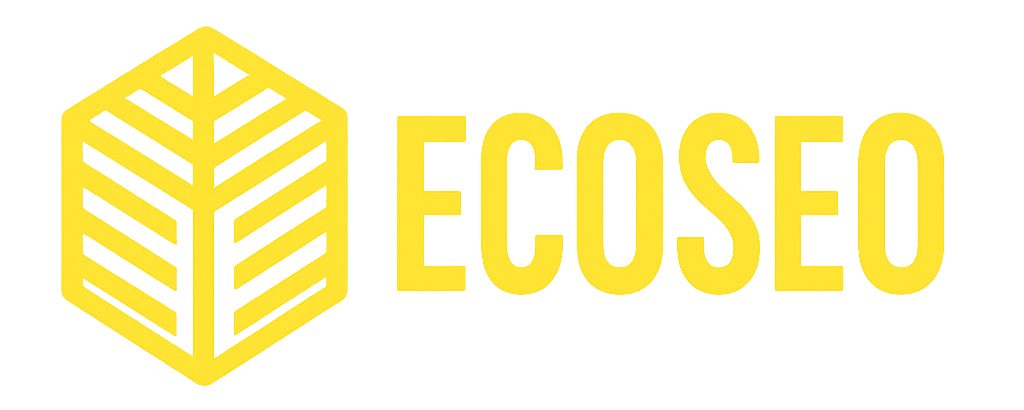Someone on the internet searches “Best Running Shoes” on Google, and your competitor’s site grabs the top spot while yours lingers out of sight. That’s not just a lost sale—it’s a missed chance to connect. Search Engine Optimization (SEO) isn’t a sideline tactic—it’s the key to unlocking visibility, traffic, and growth. So how do you make it a central driver of your marketing efforts?
This article reveals how to integrate SEO into your strategy with precision. Packed with real-world examples, expert insights, and actionable steps, it’s your guide—whether you’re a small business owner, marketer, or entrepreneur—to turn search intent into measurable results. Let’s move your brand from the shadows to the spotlight.
How SEO Supports Your Strategic Marketing Goals
SEO doesn’t operate in a vacuum—it’s most powerful when it works hand-in-hand with other digital marketing efforts like social media, email campaigns, and paid advertising. Integrating these channels creates a unified strategy that amplifies your reach, engages your audience, and drives results. But how do you make this happen, and why does it matter?
Integration is about connecting SEO with your broader online presence so each discipline supports the others. Imagine SEO as the foundation—optimizing your website and content for search engines—while social media, email, and ads act as amplifiers, pushing that content further and faster.
For example, a blog post optimized for “Best safari destinations in SA” can be shared on X.com to spark interest, emailed to subscribers for deeper engagement, or boosted with a Google Ads campaign to test its appeal.

How do I do that?
Start by mapping your marketing channels to their strengths. Social media excels at building awareness—use it to share SEO-optimized content like guides or videos, driving traffic back to your site.
Platforms like Instagram or LinkedIn can showcase snippets with strong calls-to-action (e.g., “Read the full guide here”), feeding your organic rankings with fresh clicks. Email marketing, meanwhile, nurtures loyalty—send your latest blog post to subscribers with a teaser that ties to their interests, keeping your site active and relevant in Google’s eyes.
Paid ads (PPC) offer a testing ground—run a small campaign on a keyword like “SEO for startups,” then double down on organic content for winners. The key is consistency: ensure messaging, keywords, and goals align across all touchpoints.
Why It Works:
This synergy taps into how people move online—bouncing between social feeds, inboxes, and search results. A user might discover your brand on Facebook, research you via Google, and convert through an email link.
SEO alone builds long-term visibility, but pairing it with other channels accelerates that journey. Social signals hint at relevance to search engines, email keeps users returning (boosting dwell time), and PPC refines your keyword focus. It’s a multiplier effect—each discipline lifts the others, creating a stronger digital footprint.

Understand Your Audience’s Search Behavior
SEO thrives on knowing what your audience searches for. This hinges on user intent: are they after information (“how to improve rankings”), navigation (“Takealot login”), or transactions (“buy SEO software”)? Nail this, and you’re golden.
HubSpot’s “how-to” posts, driven by audience need for solutions, became traffic magnets—something South African SMEs could replicate with terms like “how to start a business in Johannesburg.” I saw this myself: broad phrases like “digital marketing” flopped, but “digital marketing for small businesses” tripled my blog’s clicks in three months.
Dig into tools like Google Keyword Planner or SEMrush to find high-intent, long-tail keywords—think “best CRM for startups.” They’re less crowded, easier to rank, and built to convert. Audience insights steer the ship.
Create High-Value, Optimized Content
Content is SEO’s lifeblood, but it’s not about keyword cramming—it’s about crafting evergreen content that solves problems and endures. An example would be: South Africa’s GO2Africa is optimized for “best safari destinations in SA” with rich guides, boosting bookings year-on-year. If you interested, visit the website for more information on how create high value content.
Content strategist Ann Handley advises, “quality content means content that is packed with clear utility and is brimming with inspiration, and it has relentless empathy for the audience”

Master On-Page and Technical Optimization
Your site’s framework—on-page SEO (titles, meta descriptions, headers) and technical SEO (speed, mobile-friendliness)—decides if your content shines or fades.
Nitropack noted that after monitoring 245,433 unique site visits, it turned out that:
- Users who experienced a load time of 3 seconds or less visited 60% more pages.
- 50% more visitors drop off when a page loads in 3 seconds compared to a 2-second page load time.
This increased interaction can lead to more conversions, whether that’s booking a service, making a purchase, or filling out a form. Conversely, even a one-second delay (from 2 to 3 seconds) causes 50% more visitors to abandon the site, directly impacting traffic and potential revenue.
Fast load times also improve search engine rankings, as Google prioritizes speed in its algorithm. Additionally, a swift website enhances mobile usability, catering to users on the go and reducing bounce rates. In a competitive market, a fast website ensures potential clients stay engaged, find services quickly, and trust the brand, ultimately driving growth and market share.
Run Google’s PageSpeed Insights to spot fixes: compress images, enable caching, and optimize for mobile.
Build Authority Through Link Building
Link building is the process of acquiring high-quality backlinks—links from other reputable websites pointing to your site. These backlinks act as votes of confidence, signaling to search engines like Google that your website is trustworthy, relevant, and authoritative in its niche.
Effective link building involves earning links from credible sources, such as industry blogs, news sites, or professional directories, through strategies like guest posting, content collaborations, or creating shareable resources like guides or infographics.
Search engines favour sites others trust, and backlinks from credible sources build that authority. Moz’s Beginner’s Guide to SEO dominates with thousands of links, per Ahrefs.
“Examining the differences in backlink quantity and quality is an important part of search engine optimization (SEO)… Reputable websites that are relevant to the content of the target website are the source of high-quality backlinks… Search engine algorithms give greater weight to backlinks of higher quality, which enhances user trust, trustworthiness, and ranking.” noted by GetLinko

How Do You Align SEO with Other Internet Marketing Disciplines?
SEO doesn’t work in a silo—it amplifies when paired with disciplines like social media, email marketing, and paid ads. Together, they create a cohesive digital ecosystem.
For example, share your optimized “best safari destinations” guide on social platforms to drive traffic and signal relevance to Google. Use email campaigns to push evergreen content, keeping subscribers engaged while boosting page views. Even pay-per-click (PPC) ads can test keywords—high performers like “SEO for startups” can then fuel your organic strategy.
Digital marketer Neil Patel says, “Keep in mind, though, that effective SEO takes time. You might see an initial boost in your SERP presence when you put your plan into action. However, SEO is a long game. You likely won’t see results instantly, so buckle up for the long haul.”
Your SEO Roadmap: Step-by-Step
Here’s your blueprint to weave SEO into your marketing core. Each step builds on the last, using free and affordable tools to make it happen.
- Define Your Business Objectives: Pinpoint goals—like 20% more leads in six months. Write them down to keep focus sharp.
- Research High-Intent Keywords: Use Google Keyword Planner (free) or Ubersuggest (freemium) to find 10 terms your audience seeks, like “SEO tips for small businesses.” Target long-tails for quick wins.
- Optimize Content: Pick five pages on your site. Add value with stats, visuals, and headers—use Yoast SEO (WordPress plugin, free tier) to check readability and keyword density.
- Fix Technical Issues: Run Google PageSpeed Insights (free) to boost speed—compress images with TinyPNG (free) and ensure mobile-friendliness via Google’s Mobile-Friendly Test (free).
- Earn Backlinks: Create link-worthy content, like an in-depth guide or infographic, and pitch it to relevant blogs or local authority sites. Use Hunter.io (freemium) to find editor contact emails and personalize your outreach. Aim for at least one quality backlink to start building your site’s authority, which signals trustworthiness to search engines.
- Leverage Local SEO: If your business serves a specific area, optimize for local search. Claim your Google Business Profile (free) and ensure your name, address, and phone number (NAP) are consistent across directories like Yelp or Yellow Pages. Encourage customer reviews and add location-specific keywords (e.g., “SEO services in [city]”) to attract nearby clients.
- Analyze Competitors: Study your competitors to uncover opportunities. Use SEMrush (free trial) or SimilarWeb (free tier) to analyze their top-ranking keywords and backlink sources. Identify gaps in their content or weaker pages you can outrank with better, more comprehensive content. This helps you stay competitive and target untapped audiences.
- Integrate social media: Amplify your SEO efforts by sharing content on social platforms to drive traffic and engagement. Post snippets of your optimized content on X, LinkedIn, or Instagram, linking back to your site. Use Buffer (free tier) to schedule posts and track performance. Social signals may indirectly boost SEO by increasing brand visibility and click-throughs.
- Track Performance: Set up Google Search Console (free) to monitor CTR and impressions. If a page lags, tweak its title with A/B testing—tools like Google Optimize (free) help refine it.
- Iterate and Refine: SEO is an ongoing process. Review your data monthly to identify what’s working and what needs adjustment. Revisit your keyword strategy, update old content, and seek new backlink opportunities. Use insights from tracking tools to refine your goals, ensuring continuous improvement in rankings and traffic.
This roadmap works because it’s iterative: research informs content, technical fixes amplify reach, and tracking loops back to refine goals.
Free tools keep costs low—Keyword Planner mines search data, Yoast polishes pages, and Search Console tracks results. Scale up with SEMrush or Ahrefs (paid) for deeper competitor insights if budget allows. It’s a cycle of effort and reward, tailored to your pace.

Conclusion
Making SEO a core part of your strategy isn’t optional—it’s transformative. Start small, stay consistent, and watch your digital presence soar.
FAQ’s about SEO as part of a Online Marketing Strategy
What’s the fastest way to see SEO results?
Focus on low-competition, long-tail keywords and fix technical errors like slow load times. Quick wins can show in weeks, though big gains take months.
Do I need to hire an SEO expert?
Not always. Free tools and this roadmap get you started. Experts shine for complex sites or competitive niches—consider them if progress stalls.
How often should I update my SEO strategy?
Review quarterly. Search trends shift—tools like Google Trends (free) spot changes to keep you relevant.
Can social media replace SEO?
No, but it complements it. Social drives traffic; SEO builds lasting rank. Use both for a one-two punch.
What if my budget is tight?
Stick to free tools—Keyword Planner, PageSpeed Insights, and Search Console. Quality content and consistency trump big spending.




No comment